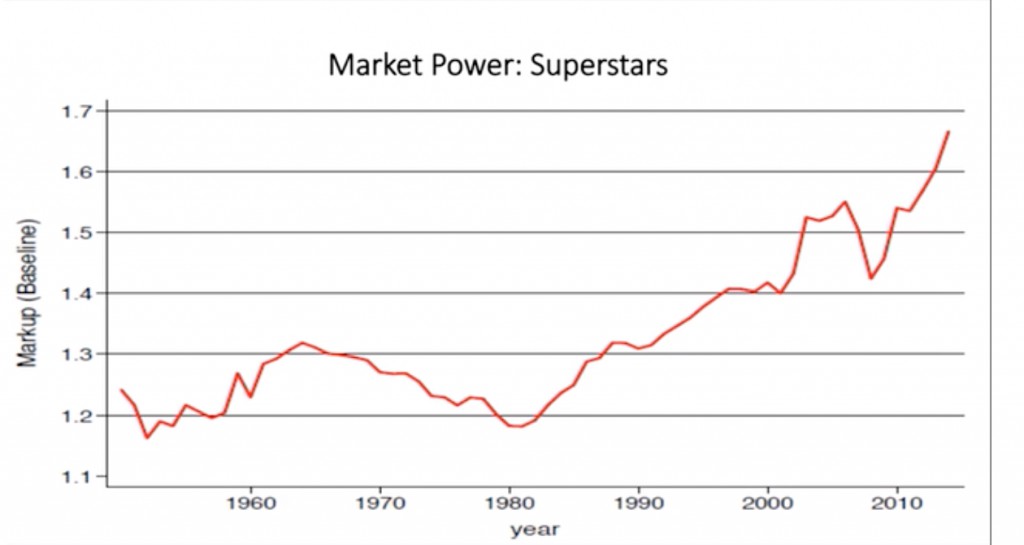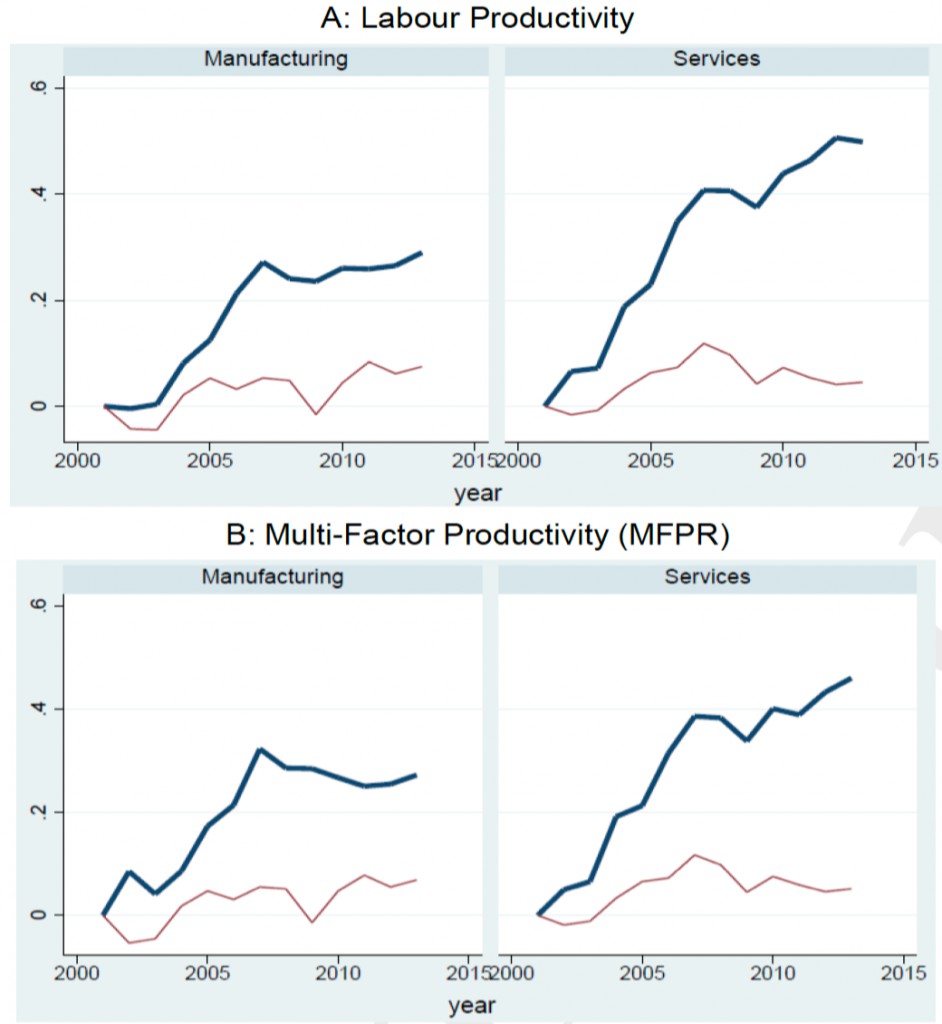New digital products are springing up like mushrooms and innovation is the fuel for economic efficiency and consequently for sustainable and inclusive growth. So why is total productivity growth far from the pre-financial crisis peaks in all advanced countries, and is it particularly low in Italy?
An answer is given by the history of the second industrial revolution, the one based on electric driving force: decades passed between the invention of the electric motor at the end of the 800th century and its adoption in industrial processes which can be considered completed at the end of the 20s. The length of the transition, explain the historians of the industry, is due to disruption of this innovation which caused a massacre of companies well established in the market which, however, were unable to withstand the competition of the new ones in the boom years which preceded the great crisis of '29.
Not surprisingly, it was in the second decade of the 900s that Schumpeter places "creative destruction" at the basis of economic development. By switching from steam to electricity, the whole chain of production processes had to be changed, the layout of the factory could be developed in height, the different units could be independent of the single steam engine that previously moved all the machinery and when it broke down it blocked all production.
The powerful trusts that dominated the US industrial scene in the early 1905th century shrank in number and their market power also fell: from 1929 to 42, XNUMX large manufacturing groups lost more than a third of their market share. The simple replacement of steam power with electric power was not in fact sufficient to withstand the competition of companies that knew how to use all the potential and malleability of electricity in the factory.
Based on Schumpeter's story and insight, it is entrepreneurial and managerial skills that explain both the low growth and the differences in total productivity between countries. Since 2004, management skills have been measured by the World Management Survey (WMS) with its 20.000 interviews. But the ownership of the company also matters and the WMS finds the worst performances in family and publicly owned companies.
Employee skills are also important: not only those of entry, but also those acquired with continuous updating in the company. To those who asked him if he wasn't afraid that the updated employees would leave the company, a Google manager replied: and what will happen if we don't update the employees and they stay? The theme also concerns the revolution ofautomation examined by OECD research which we talked about recently.
Robert Solow in 1987 he observed that computers were everywhere less than in the productivity statistics. Ten years later, productivity in the States had risen to 2,5% annually, growth not seen since the 70s. Today we are in what has been called the second-age machine or fourth industrial revolution, but productivity growth in both the US and the EU fell from 2,5% a year at the turn of the century to 0,5%.
Another answer to the question why the incredible acceleration of innovation, approximated by the number of patents filed from 1978 to 2016 in the graph below, does not correspond, after the global financial crisis, to the increase in total productivity is the lack of the appropriate measuring instruments: in particular, it should be noted that the national accounts do not include the calculation of consumer surplus, given that many benefits, for example of social media, are not for businesses and are not monetary. But consumer surplus estimates account for only one-third of the distance between productivity measured and expected productivity even by including in consumer surplus not only the pleasure of keeping in touch with friends via Facebook &C., but also free photos and above all the time saved with online banking, travel and hotel bookings and with online public administration, where it works.
These measurement problems, especially of the intangible capital which we talk about below, are so important that the International Monetary Fund dedicated its Statistical Forum to the topic last week. The digital economy is also called knowledge based economy: in this type of economy the most valuable asset is intellectual property and therefore investments in intangibles, even those that are not monetized, such as open source software created by universities and governments and in particular the data procured by users.
It should be recognized that the services offered by social media not they are free, but paid in exchange for the data offered free of charge by users. It is a barter, some argue, but not an exchange of equivalents given the profits - these yes monetary - made by social media with advertising aimed at the preferences revealed by users and potential customers. The value of the data provided by users, on the other hand, is not included in corporate or national accounting, even if institutions such as the German Antitrust have already begun to take them into account. One could apply Solow's paradox to big data: they are everywhere except in corporate and national accounts. A study presented at the IMF Statistical Forum raises the value of Amazon to 125 billion dollars instead of 42 billion if the data it held were valued as an asset on its balance sheet. While digital gurus shoot much higher figures valuing intangible assets at 90% of the value of Standard & Poor's 500 and at 4 trillion dollars the intangibles owned by the 4 largest digital companies in whose balance sheets there are only 220 billion of tangible assets.
Precisely these characteristics of digital superstars give rise to another explanation of the productivity paradox: the market power of superstars which may justify the widening of the gap between these and other companies as the markup of superstars continues to grow.

With investments like Google's $50 billion a year, however, we can say that the superstars are not using their market power to stifle technological progress, but there are other means to consolidate control of the market. The purchase of start-ups that can become competitors for example. Jim Balsillie, former CEO of Blackberry, argues that foreign investments in the digital age no longer create positive spillovers for host countries, but rather poach promising people and programs that are moved to the parent company. This approach would be reflected in trade agreements which instead of liberalizing tend to protect.
Yet another explanation focuses on the job market: while the number of employees in the digital economy decreases or does not increase as their productivity increases exponentially, workers increase in the less productive sectors and competition between them keeps wages low and explains the reduction in the share of wages in GDP. This dynamic of labor productivity is accentuated by immigration unskilled and the aging of the population in advanced countries. And it is reflected in total factor productivity, as the graph below shows.

The increase in number and persistence over time of zombie exploits finally, it helps to explain the paradox of low total productivity. No doubt zombie firms survive on low interest rates and the forbearance of banks trying to avoid negative balance sheet items. They are therefore a transitory phenomenon destined to disappear in a restored economy at the end of the expansive monetary policies which made it possible to overcome the global financial crisis and its consequences of credit crunch and crisis of the real economy.
Together, the explanations presented account for today's low productivity growth even in economies home to superstars. Measuring and regulating the digital economy remains the task of national governments and international organizations: how to achieve the goal of ensuring benefits for all with the growth of aggregate productivity while reducing the increase in inequality generated so far?




